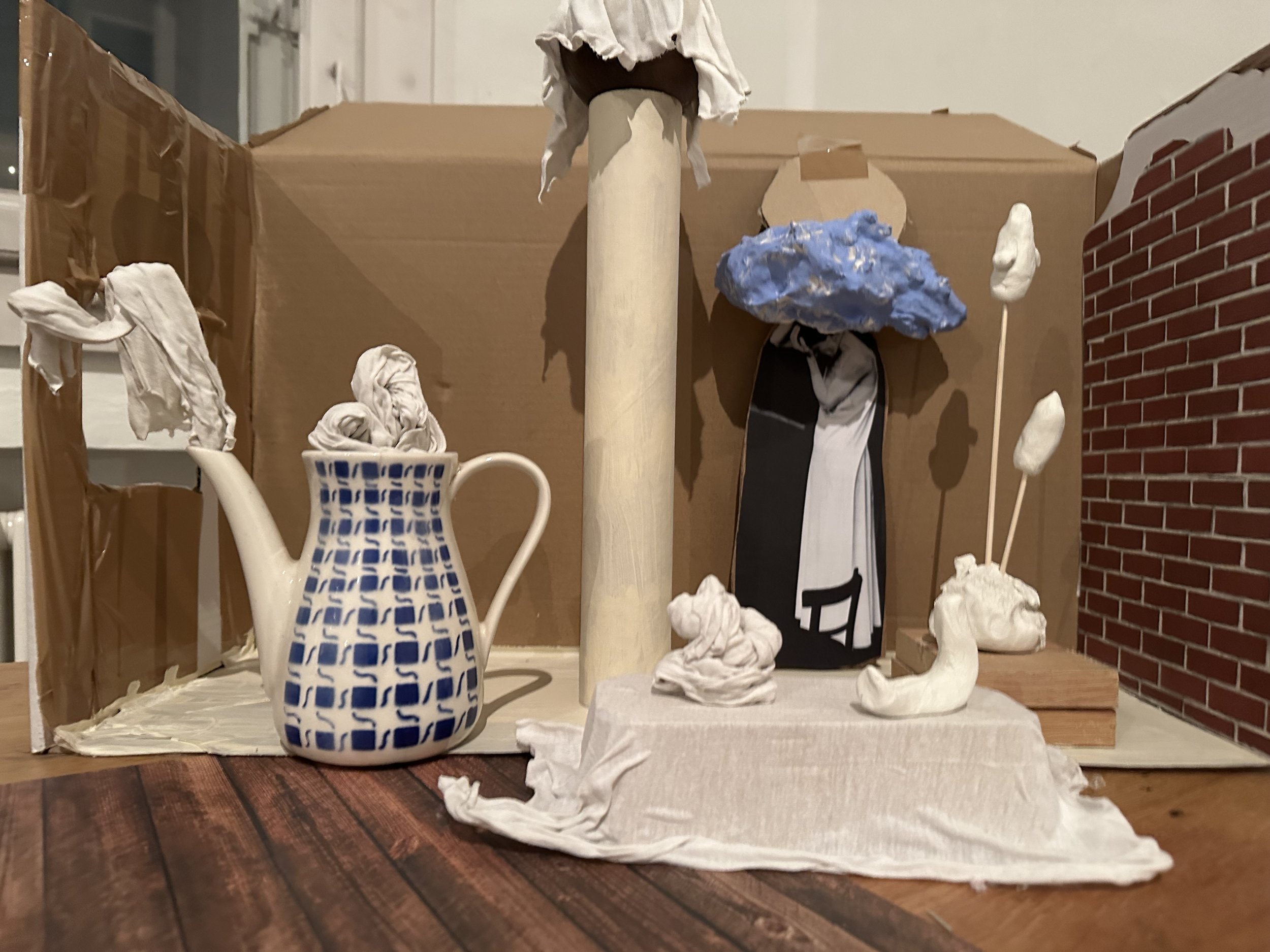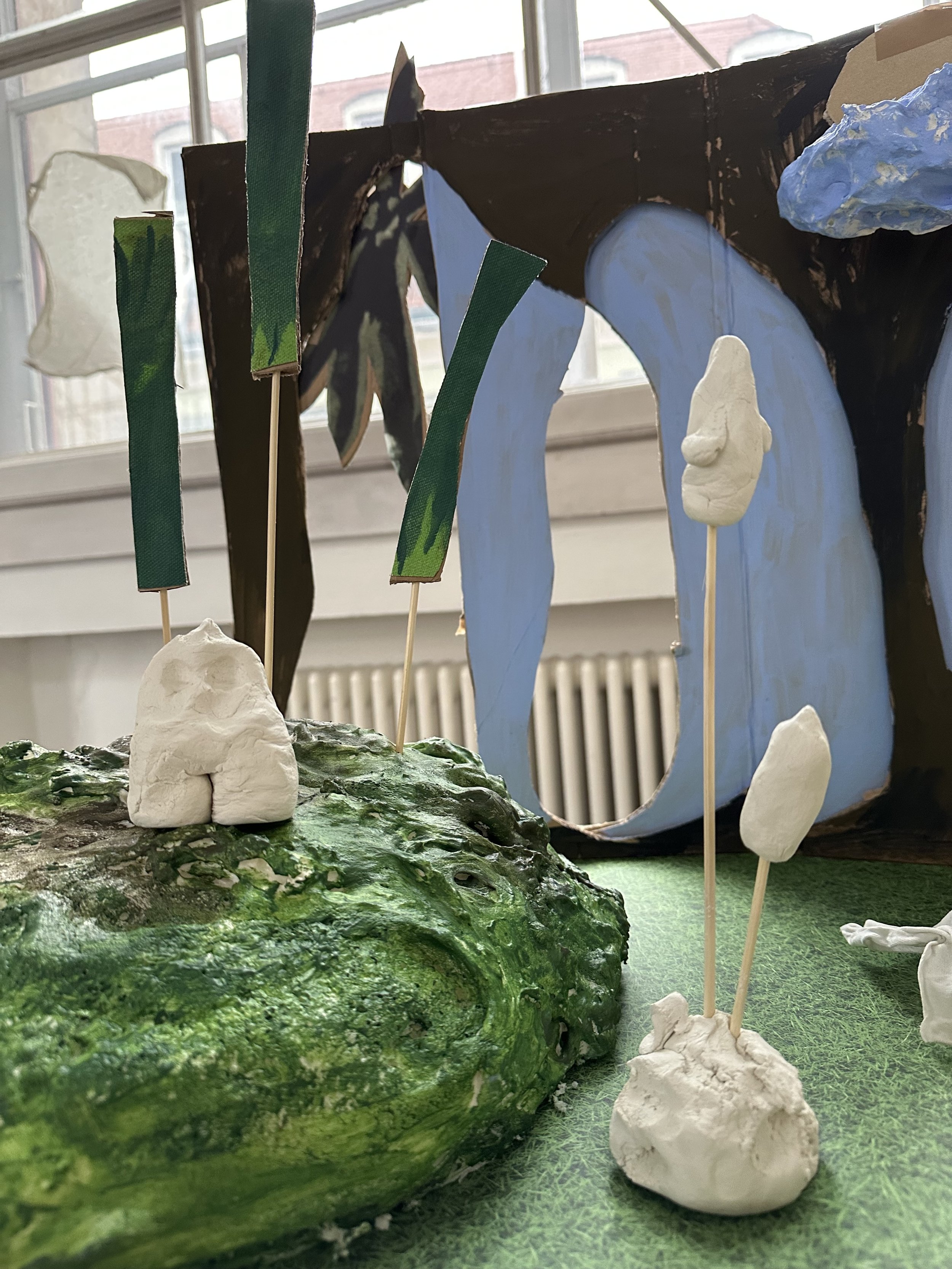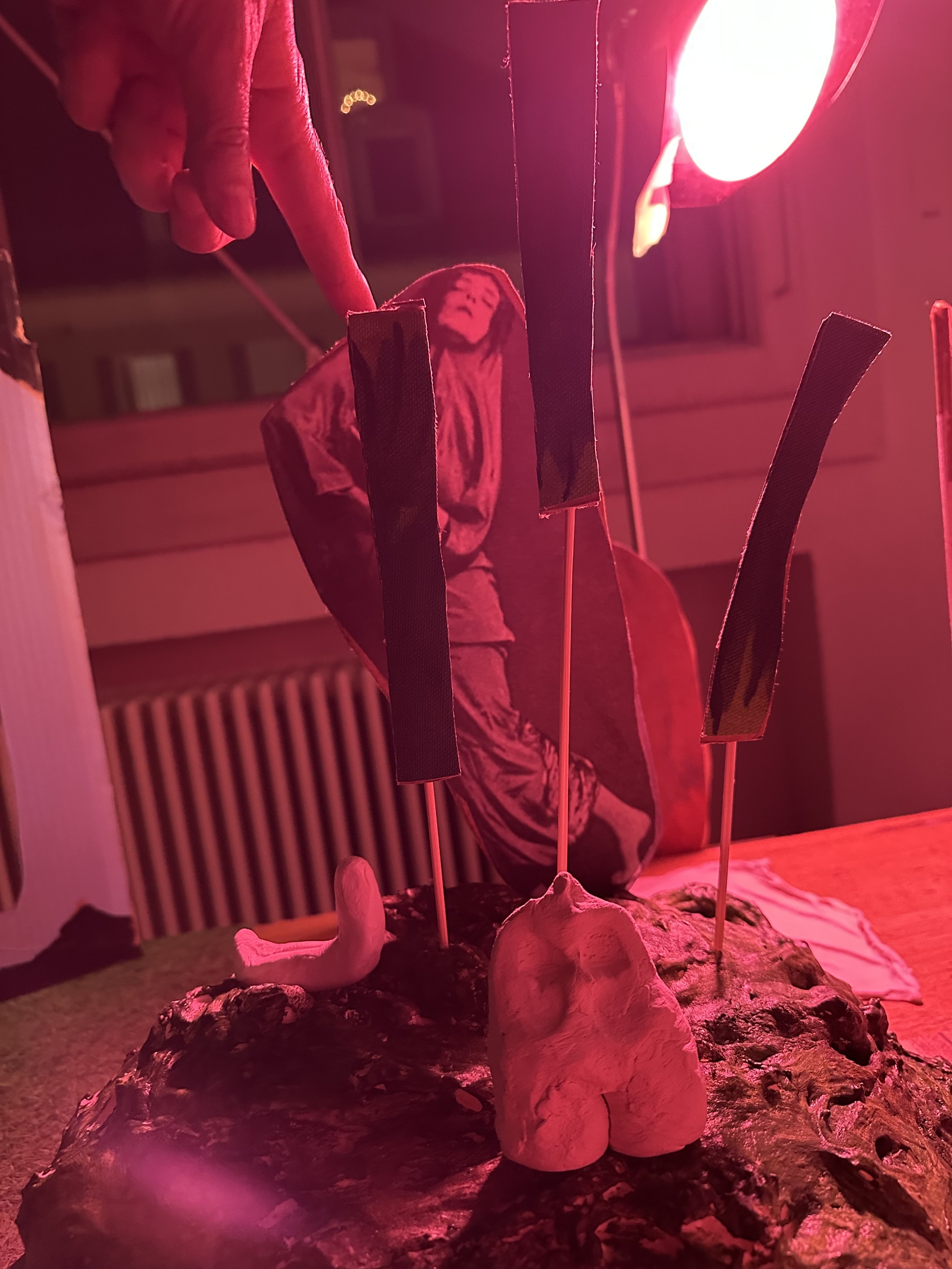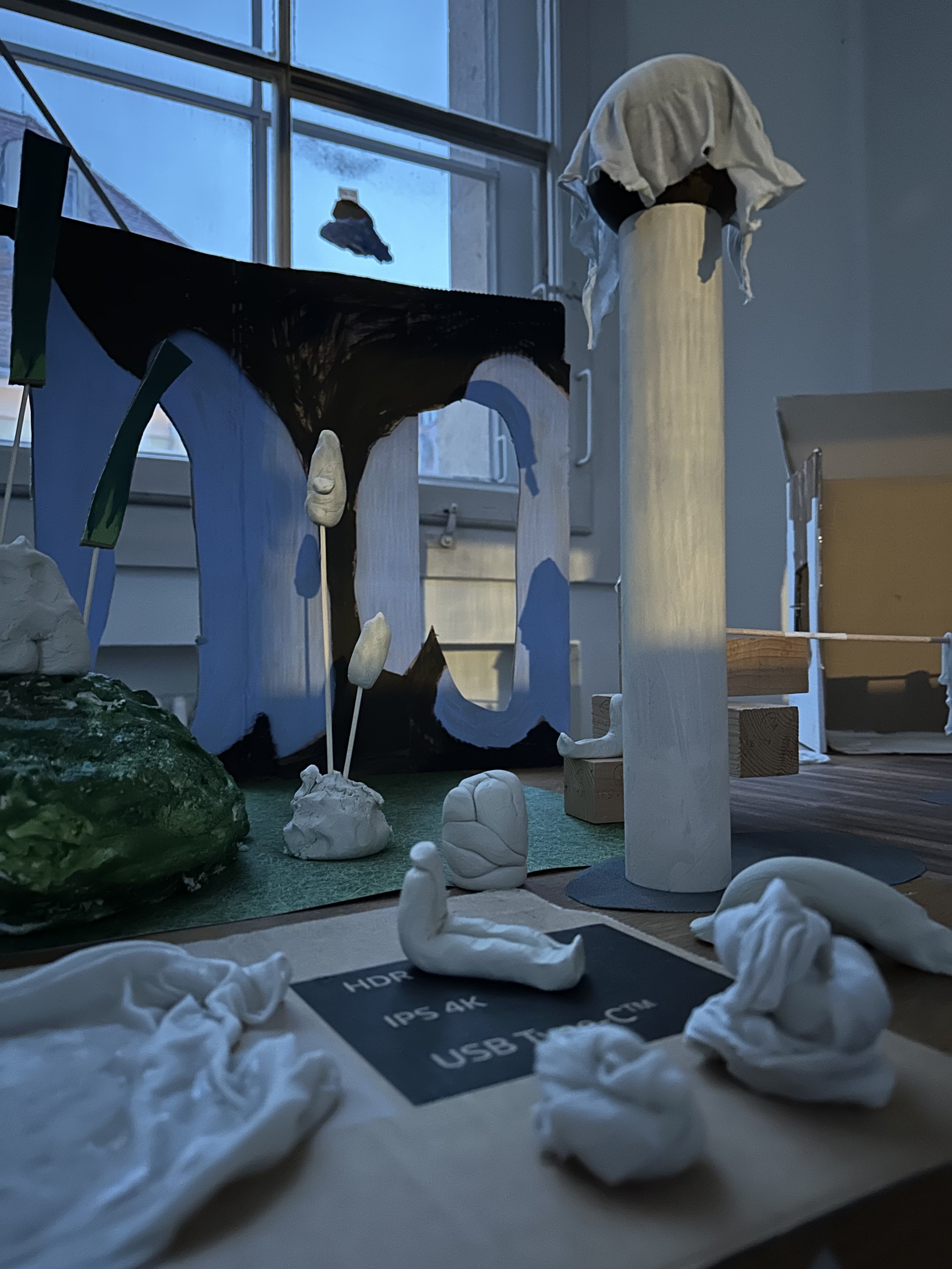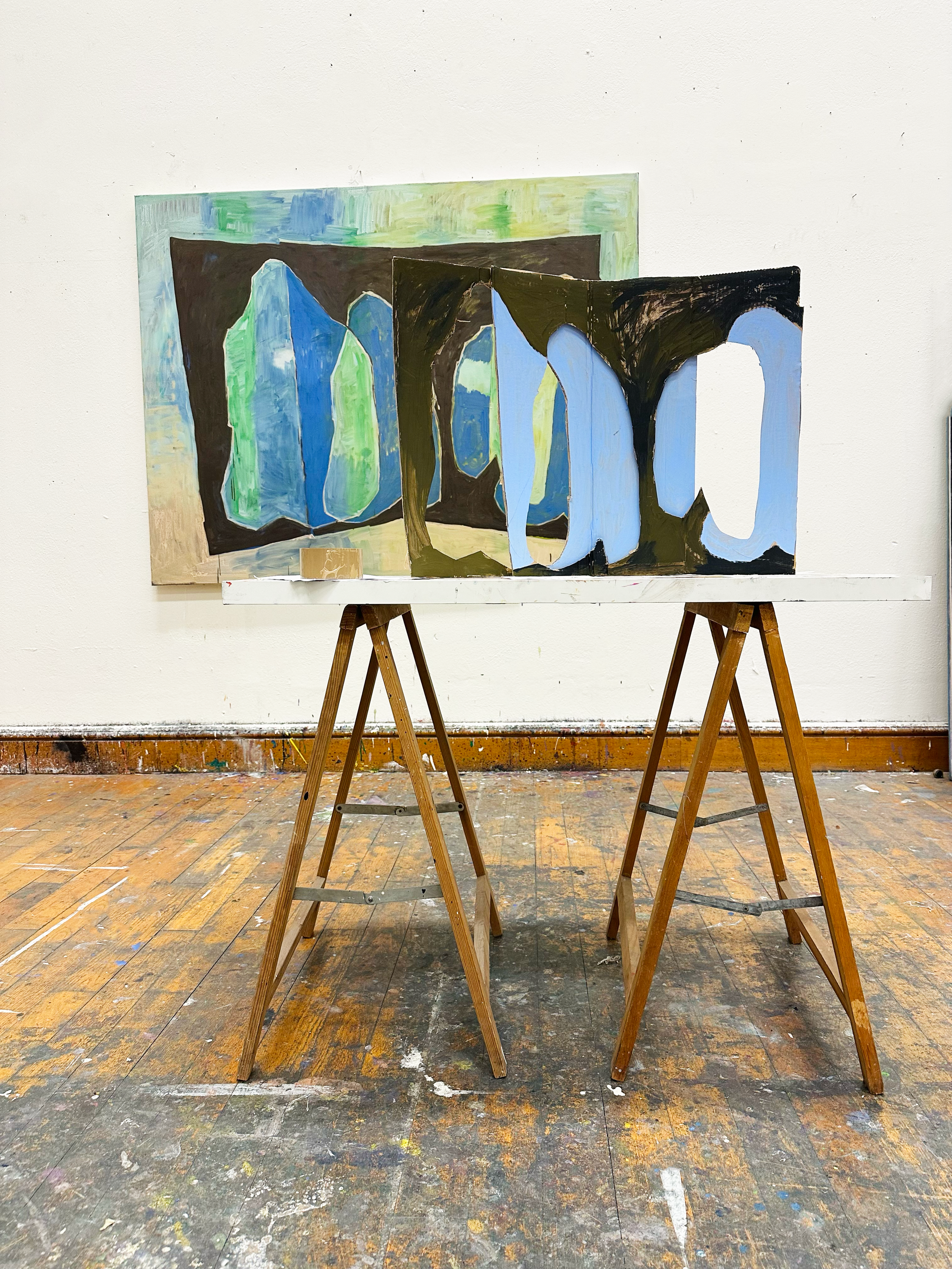Zemrude is a city that shifts according to the emotions and perspective of its observer. When approached with a light heart, it appears bright, welcoming, and full of possibility. When seen through sadness or despair, it becomes a dark place. The city itself remains unchanged—only the perception of the viewer transforms.
This painting series is inspired by Italo Calvino’s novel Invisible Cities. To develop the works, the artist constructed a maquette—a small-scale model incorporating elements of architecture, silhouettes, and landscapes—exploring ideas of constructed realities, spatial ambiguity, and the tension between representation and materiality. Materials such as cardboard, clay, wooden sticks, insulation foam, tape, and acrylic paint were used. The rough, unrefined treatment suggests impermanence.
By translating a three-dimensional maquette into two-dimensional paintings, the artist questions how we perceive space. The flatness and weightlessness evoke a world that feels both tangible and unreal, where depth is often simulated rather than physically present. The disjointed silhouettes and architectural elements, reminiscent of collage, reflect the fragmented nature of contemporary experience. Through this series, Baldyga processes the mediated world and translates it into painterly form.

